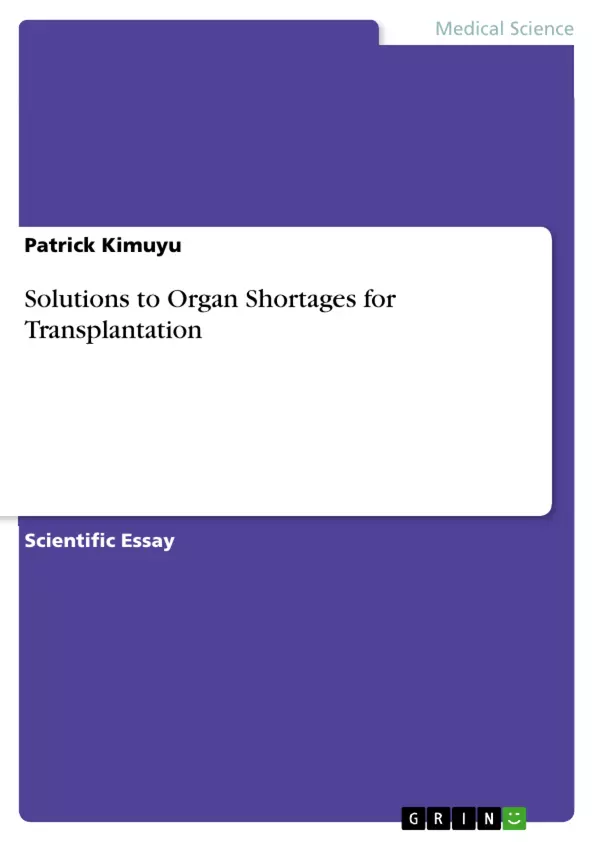Organ transplantation has become one of the most reliable life-saving medical approaches in the medical field. Miller et al. (2003) report “many lives have been saved that would not have been otherwise, and yet waiting lists for organs continue to increase” (par. 3). Historically, organ transplantation dates back to 1954 when the first human kidney was transplanted successfully. Later on in 1967, Christian Barnard carried out the first heart transplant. In general, a number of organ transplants were performed in 1960s including liver, pancreas and lung transplants, and this opened up treatment options for patients with organ failures. However, it is worth noting that, the success of organ transplant was enhanced by an array of clinical research findings. For instance, the discovery of immunosuppressive drugs, which prevented the rejection of organ grafts served as a significant breakthrough in organ transplantation.
Currently, organ transplantation has gained popularity owing to its reliability although organ procurement and allocation laws appear to have limited its clinical use. Abouna (2008) reports “In the United States, for example, the number of patients on the waiting list in the year 2006 had risen to over 95,000 while the number of patient deaths was over 6,300” (p. 34). However, organ transplantation has been faced with unprecedented organ shortage crises. It has been reported that about 18 patients in the waiting list die every day owing to the shortage of organ donations (Rall, 2013). Therefore, this paper will provide solutions which appear relevant in addressing the shortage of organs available for transplantation.
Inhaltsverzeichnis (Table of Contents)
- Introduction
- The Promise of Emerging Tissue Engineering Technologies
- Stem Cell Technology
- Organ Policy Review
- Implementation of Appropriate Educational Programs
Zielsetzung und Themenschwerpunkte (Objectives and Key Themes)
This paper aims to explore and propose solutions to the critical organ shortage crisis currently affecting the medical field. It examines the challenges faced by organ transplantation, including limited donor availability and ethical considerations surrounding organ procurement and allocation. The paper delves into potential solutions, including emerging technologies, policy revisions, and educational initiatives.
- Organ Shortage Crisis in Transplantation
- Stem Cell Technology for Organ Generation
- Review of Organ Procurement and Allocation Policies
- Importance of Public Education on Organ Donation
- Ethical and Legal Considerations in Organ Transplantation
Zusammenfassung der Kapitel (Chapter Summaries)
- Introduction: This section provides a brief overview of the history and significance of organ transplantation, highlighting the growing organ shortage crisis and the urgent need for solutions.
- The Promise of Emerging Tissue Engineering Technologies: This section introduces three main approaches to address the organ shortage: stem cell technology, organ policy review, and educational initiatives.
- Stem Cell Technology: This chapter focuses on the potential of stem cell technology to develop human organs in animals like pigs and rats, discussing ongoing research and its promising implications for organ transplantation.
- Organ Policy Review: This section examines the current organ procurement and allocation policies in the US, highlighting their limitations and suggesting necessary revisions to increase organ availability.
- Implementation of Appropriate Educational Programs: This chapter emphasizes the need for public awareness campaigns on the benefits of organ donation, highlighting the role of education in promoting donor willingness.
Schlüsselwörter (Keywords)
This paper focuses on organ transplantation, organ shortage, stem cell technology, organ procurement, organ allocation, organ policy, educational programs, ethical considerations, and donor awareness.
- Quote paper
- Patrick Kimuyu (Author), 2016, Solutions to Organ Shortages for Transplantation, Munich, GRIN Verlag, https://www.hausarbeiten.de/document/381252


